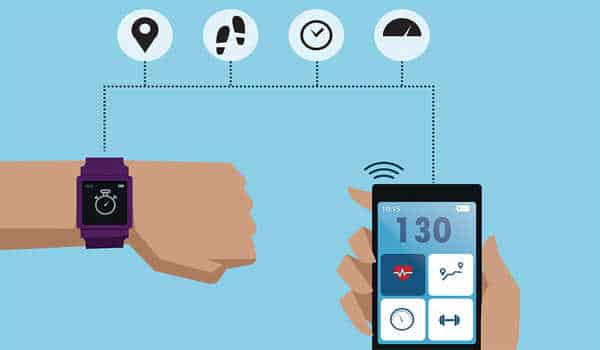Researchers created a gene switch that can be activated by the green LED light emitted by commercial smartwatches. This ground-breaking method could be used to treat diabetes in the future. The researchers claim to have activated an insulin-producing gene network using the green light of smart wearables, an approach they believe could be used to treat diabetes in the future.
Many modern fitness trackers and smartwatches have built-in LEDs. The green light emitted, whether continuous or pulsed, penetrates the skin and can be used to measure the wearer’s heart rate while exercising or at rest.
These timepieces have grown in popularity. A group of ETH researchers now wants to capitalize on that popularity by using LEDs to control genes and change cell behavior through the skin. Martin Fussenegger of Basel’s Department of Biosystems Science and Engineering leads the team. He explains the difficulty of this endeavor: “There is no naturally occurring molecular system in human cells that responds to green light, so we had to create one.”
A commercial smartwatch’s green light-emitting diode (LED) can trigger an implanted molecular switch to regulate insulin production, thanks to researchers at ETH Zurich in Switzerland.
Greenlight from the smartwatch activates the gene
The ETH professor and his colleagues eventually developed a molecular switch that, once implanted, can be activated by a smartwatch’s green light.
The switch is linked to a gene network introduced into human cells by the researchers. For the prototype, they used HEK 293 cells, as is customary. Depending on how this network is configured – that is, the genes it contains – it can produce insulin or other substances as soon as the cells are exposed to green light. Turning off the light deactivates the switch and brings the process to a halt.
The prototype switch is linked to a gene network implanted in HEK 293 cells, which, depending on the network’s configuration, can produce insulin or other substances in response to the green light. The system makes use of standard smartwatch software, eliminating the need for the development of specialized programs. “It’s the first time that an implant of this kind has been operated using commercially available, smart electronic devices,” said Martin Fussenegger of ETH Zurich.

Standard software
The researchers did not need to develop special programs because they used standard smartwatch software. During their tests, they activated the green light by launching the app. “Off-the-shelf watches provide a universal solution for flipping the molecular switch,” Fussenegger explains. New models emit light pulses that are even better suited to maintaining the gene network.
The molecular switch, on the other hand, is more complicated. A molecule complex was integrated into the cell membrane and linked to a connecting piece, similar to a railway carriage coupling. When the green light is emitted, the component that projects into the cell detaches and travels to the cell nucleus, where it activates an insulin-producing gene. When the green light goes out, the detached piece reattaches to its counterpart embedded in the membrane.
Controlling implants with wearables
The researchers put their system through its paces on both pork rinds and live mice, implanting the necessary cells and strapping a smartwatch around their necks like a rucksack. The researchers activated the cascade by opening the watch’s running program and turning on the green light.
“This is the first time an implant of this type has been operated using commercially available, smart electronic devices – known as wearables because they are worn directly on the skin,” says the ETH professor. Most watches emit green light, which provides a practical foundation for a potential application because users do not need to purchase a special device.
However, Fussenegger believes that this technology will not enter clinical practice for at least another ten years. The cells used in this prototype would have to be replaced with cells from the user. Furthermore, the system must go through the clinical phases before it can be approved, implying significant regulatory hurdles. “Only a few cell therapies have been approved to date,” Fussenegger says.
How does the green light-regulated gene network work?
The researchers were able to create a molecular switch that was activated by the smartwatch’s green light. The switch is linked to a gene network that can be turned on or off. The cascade is activated by programmed green-light illumination, which produces insulin or other substances on demand. During the investigation, the green light was activated by launching the running app. When the light is turned off, the switch is deactivated, and the process comes to a halt. Dr. Fussenegger explained that because the researchers used standard smartwatch software, “off-the-shelf watches offer a universal solution to flip the molecular switch.”
















